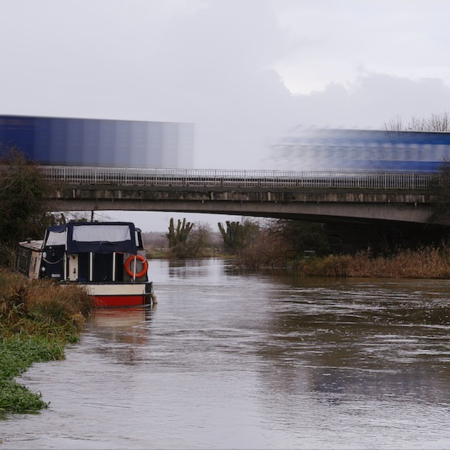Adapting the idea: resisting the cookie cutter
January's edition of the Remoter Water series from our Visiting Research Fellow, Bevis Bowden
Apart from a few isolated days, since November river levels on the whole have prevented me from filming from my kayak. Even with the seeming invincibility of my dry suit I have on the whole kept my kayak out of the water. There are times to concede to powers greater than your own. In many ways this is the reality of filmmaking. Film production needs to adjust in response to what is actually happening on the ground (or in the river in my case) and if this necessitates a shift in strategy and theme then so be it.
I talked about the unpacking and the fragility of the idea in my opening talk at Merton. But once you have unpacked the idea what do you then do with its constituents?
Presuming you are not fundamentally changing the idea’s DNA, visualisation is a fundamental part of this process. I collect ideas. At any one time I’m gathering ideas and hanging them on an imagined rotary airer. This is my virtual sketch book. Presently the opening sequence of Robert Wise and Jerome Robbins 1961 film Westside Story; the painting A Surrey Landscape by Frank Dicksee; NASA’s re-entry of Orion returning from Artemis I; Nicholas Roeg’s 1971 film Walkabout and the book Another Way of Telling by John Birger are hanging on my rotary airer. I impose no hierarchy to the ideas at this stage and resist over conceptualising them. I’m just collecting and as with any washing line some of the ideas will be lost to the wind! At the very least the gathered ideas are a first step into a landscape of otherwise infinite possibilities.
I would like to say I don’t have a cookie cutter approach to filmmaking and I ‘always follow my arrow’, but I am aware of established effective mechanisms to storytelling that filmmakers use. What has always excited me about filmmaking (and the arts at large), is the formats flexibility - its kaleidoscopic ability to overlap and shift. As a filmmaker I like to stray from convention and offer a more oblique point of view - perhaps I feel it’s only necessary tell half the story! I do believe though, for the non-convention to gain a foothold, it needs to be a reaction to convention - to hear silence you need to be surrounded by noise. But if you choose to stray across the tracks in pursuit of convention or non-convention, always remember what side you came from?
With this in my mind when arriving at a location I will firstly attempt to bookend the idea of the film within the realities of that location. What is it in front of me that visually represents the themes of the film I am trying to make. How can I visually distil these themes through filmmaking techniques. But the world can look very different through a lens so much of the negotiation is often as much about removing superfluous information through a process of selective framing. As a filmmaker you are constantly negotiating these imperfections within the frame and strategizing the compromise while at the same time attempting to hold on to the idea. Perhaps filmmaking is about knowing when to tighten and when to loosen the reigns while still maintaining control and a purposeful direction.
I mentioned negotiating a location’s imperfections. I have been filming along the Isis above Godstow. This location though has its challenges. It’s difficult to ignore the A34 and A40 for example. They form both a visual and unavoidable audible backdrop to the landscape. Initially I attempted to remove the road through selective framing but as my ideas have developed for the film, I have discovered a means to embrace their presence. They are of course the Godstow of today and I’m not making a drama from an imagined time in the past. But their presence has required some careful management to maintain the correct balance within my narrative. So, embracing Godstow’s roads has been a leap of faith in some respects. They are intrinsically entangled in the landscape but how to represent them? There are many existing visual tropes to investigate. Of particular interest to me is the difference between how the road and river represent time passing (which will feature as a broader theme in my film) so I have been looking for a formula to visualise this. I have always embraced digital intervention to enhance a shot, but I have always felt, at least in my work, they should be invisible to the viewer. The removal of a distracting object from a shot would be a good example. Every location has its family of visual distractions and signs deserve a particular mention here. In this country we seem to have a propensity for inserting signs in the most unlikely places. Some make you wonder in their pronouncement of the bloody obvious! Ironically, it’s their high visibility that makes them easy to digitally isolate and replace with a pixel average that surrounds them. Perhaps my films should carry their own safety warning to compensate for the ones I have removed?
But this leap of faith to embrace the road and the use of a digital intervention has unlocked an alternative narrative for the film. It’s this combination of following your arrow and trusting instinct in the moment that makes filmmaking so exciting.
